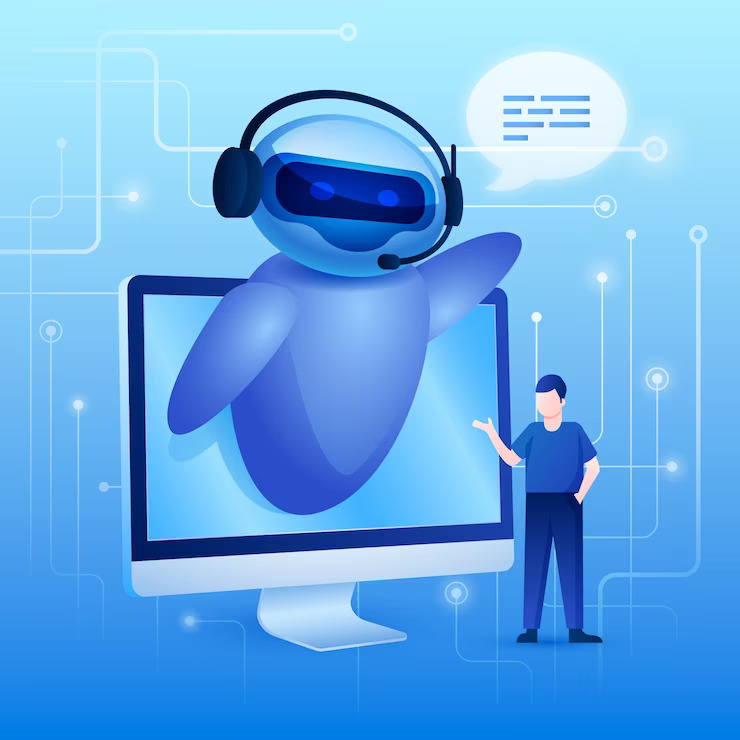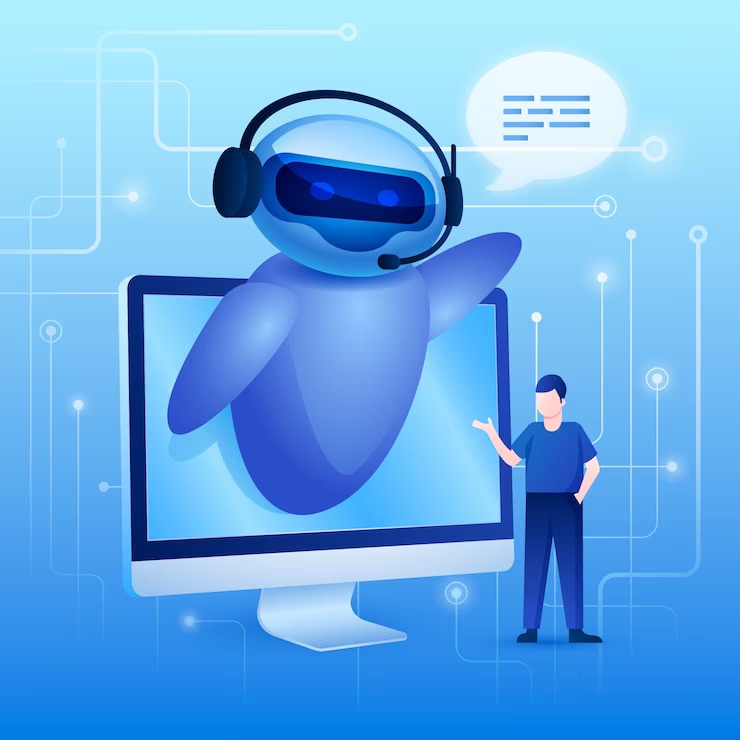Definition and Purpose of Voice Bots
Voice bots, also known as AI voice bots or virtual agents, are advanced computer programs that utilize natural language processing (NLP) and speech recognition technologies to interact with callers in a call center setting. These intelligent systems are designed to simulate human-like conversations, understand spoken language, and provide accurate responses to customer queries or requests. The primary purpose of voice bots is to automate and streamline customer interactions in call centers, alleviating the load on human agents while enhancing overall efficiency.

Evolution of Call Center Technology
The use of technology in call centers has significantly evolved over the years. Traditionally, call centers heavily relied on manual processes, where calls were handled by human agents who had limited access to caller information and often struggled with high call volumes. However, with advancements in technology and the emergence of voice bot solutions, call centers have experienced a profound transformation.
From the early Interactive Voice Response (IVR) systems that allowed customers to navigate through menu options using key presses, we have come a long way towards more sophisticated voice bot solutions. Today's voice bots leverage cutting-edge technologies like natural language understanding (NLU), machine learning algorithms, and artificial intelligence (AI) to provide intuitive conversations that closely mimic human interactions.
Benefits of Using Voice Bots in Call Centers
Implementing voice bot technology brings numerous benefits to call centers. Firstly, it allows for improved operational efficiency by enabling automated handling of routine queries or straightforward tasks such as balance inquiries or appointment scheduling. This automation frees up human agents' time so they can focus on more complex issues requiring their expertise.
Moreover, voice bot solutions offer businesses scalability advantages by effectively managing high volumes of calls without compromising service quality or increasing costs exponentially. With the ability to handle multiple calls simultaneously, voice bots ensure reduced waiting times and faster query resolution for customers.
Natural Language Processing (NLP) and Speech Recognition
How NLP enables voice bots to understand human language
Voice bot solutions have revolutionized the way call centers interact with customers by leveraging advanced Natural Language Processing (NLP) techniques. NLP allows voice bots to comprehend the nuances of human language, enabling them to understand and interpret customer queries accurately.
This technology incorporates various components such as text analysis, syntactic parsing, and semantic understanding to extract meaning from spoken or written words. At its core, NLP is designed to tackle the complexities of human language by breaking it down into manageable components.
Importance of accurate speech recognition for effective communication
Accurate speech recognition plays a vital role in the effectiveness of voice bot solutions for call centers. When customers interact with AI-powered voice bots over phone calls, their spoken words are transcribed into text using advanced speech recognition technology.
These advancements enable voice bots to accurately convert spoken language into written text even in noisy environments or when dealing with accents or dialects. The importance of accurate speech recognition cannot be overstated; any misinterpretation can lead to misunderstandings between customers and AI voice bot.
Machine Learning and Artificial Intelligence (AI)
Role of AI in training voice bots to handle complex interactions
Artificial Intelligence (AI) forms the backbone of advanced voice bot solutions for call centers. Through the use of machine learning algorithms, AI empowers voice bots to handle complex interactions with customers efficiently. Training a voice bot involves exposing it to vast amounts of data comprising diverse customer queries and responses.
This process allows the AI model behind the voice bot to learn patterns, understand common scenarios, and identify appropriate actions or responses. By employing machine learning techniques such as deep neural networks or reinforcement learning algorithms, AI can analyze customer interactions in real-time.
Continuous learning and improvement through machine learning algorithms
One key advantage of using AI in voice bot technology is its ability to continuously learn from new data while improving over time. By leveraging machine learning algorithms such as online or incremental learning techniques, voice bots can adapt to changing customer needs and preferences.
Through continuous exposure to new customer interactions, AI-powered voice bots can refine their understanding of language patterns and enhance their response accuracy. This iterative process allows them to learn from mistakes or incorrect interpretations, gradually minimizing errors over time.
Implementation and Integration of Voice Bots in Call Centers
Designing an efficient call flow with voice bots
When implementing voice bot technology in a call center, it is essential to design a well-structured call flow that maximizes efficiency and ensures a seamless customer experience. One key aspect of this design process is mapping customer journeys.
By analyzing the typical paths customers take during their interactions with the call center, you can identify pain points, bottlenecks, and opportunities for improvement. This understanding allows you to create a call flow that guides customers through their queries or concerns swiftly and effectively.
Integrating voice bot technology with existing call center infrastructure
Integrating voice bot technology seamlessly into your existing call center infrastructure is vital for its effective implementation. One critical consideration during integration is compatibility with telephony systems. Ensuring that your chosen voice bot solution aligns with your telephony infrastructure guarantees smooth communication between the caller and the bot.
API integration plays a crucial role in leveraging data retrieval capabilities and facilitating CRM integration within your call center setup. Through APIs, voice bots can access relevant customer information from databases or external systems promptly.
Enhancing Customer Experience with Voice Bots
Empathy and Emotional Intelligence in Voice Bot Interactions
Subtitle: Bridging the gap between technology and human emotions In today's fast-paced world, where customer expectations are constantly evolving, the ability of voice bots to exhibit empathy and emotional intelligence is becoming increasingly important. Understanding and addressing customer emotions can have a tremendous impact on their overall experience.
To achieve this, AI voice bots utilize sentiment analysis—a powerful tool that allows them to gauge the emotional tone of a conversation. Sentiment analysis involves analyzing the language, tone, and context used by customers during interactions.
By assessing factors such as word choice, intonation, and even pauses in speech patterns, voice bots can accurately detect whether a customer is happy, frustrated, or confused. This real-time analysis enables voice bot solutions to tailor their responses accordingly.
Personalization and Contextual Understanding
Subtitle: Tailoring experiences for individual customers Voice bot solutions have the ability to leverage vast amounts of customer data to deliver personalized experiences tailored to individual preferences.
By securely accessing relevant information such as past purchase history or previous interactions with the company's call center agents, voice bots can provide more accurate recommendations or resolutions. Leveraging customer data enables voice bots to understand each customer's unique needs at a granular level.
Additionally, leveraging customer data enables personalized experiences tailored to individual preferences, while contextual awareness ensures smooth conversations. By incorporating these elements into voice bot for call center can truly elevate their customer service capabilities to new heights.
Challenges and Limitations of Voice Bot Technology in Call Centers
Handling complex queries or unique situations beyond the bot's capabilities
While AI voice bot technology has advanced significantly, there are still limitations to what they can handle. Complex queries or unique situations that go beyond the scope of pre-programmed responses can pose a challenge for voice bots.
These bots may struggle to understand nuanced language, interpret context accurately, or provide appropriate solutions for intricate problems. For example, if a customer presents an uncommon technical issue or requires specialized knowledge, the voice bot may not possess the necessary expertise to effectively address it.
Escalation procedures when a bot cannot resolve an issue
In instances where a voice bot is unable to resolve an issue or adequately assist a customer, it is crucial for call centers to establish clear escalation procedures. By seamlessly transitioning the interaction from the voice bot to a human agent with relevant expertise and experience, customer satisfaction can be maintained while ensuring efficient problem resolution. This handover process should be designed in such a way that contextual information gathered by the AI voice bot is seamlessly transferred to the human agent, minimizing repetition and enhancing continuity.
Conclusion
While there are certain challenges and limitations associated with integrating AI-powered voice bots into call center operations, their potential benefits cannot be overlooked. Despite their limitations in handling complex queries and unique situations, proper escalation procedures allow seamless transfer of customers' issues from bots to human agents who can offer tailored solutions.
Leveraging voicebot solutions enables call centers to streamline operations by automating routine tasks and providing quick assistance for standard inquiries. As technology continues to evolve and improve, we can expect AI-powered voice bots to become even more proficient in understanding complex language nuances and addressing intricate issues.
With ongoing advancements in natural language processing and machine learning algorithms, these limitations will gradually diminish over time. The future of call center operations holds great promise as voice bot technology continues to enhance customer experiences and optimize efficiency.


No comments yet